How can I use UIAlertViewController in appdelegate class.
Asked
Active
Viewed 167 times
-1
Serjik
- 10,543
- 8
- 61
- 70
S.Dharmwan
- 1
- 1
-
u can't present alert box...!!! – Yagnesh Dobariya Feb 16 '16 at 04:24
-
just `[alert show];` – KDeogharkar Feb 16 '16 at 04:25
-
@KDeogharkar its UIAlertView, this is UIAlertController and it needs another controller to show it, but rather use UIAlertView for simple showing – Tj3n Feb 16 '16 at 04:28
-
I got your point but in future UIAlertView may not work for ios 9. – S.Dharmwan Feb 16 '16 at 04:31
-
oh sorry @Tj3n . i missed that my mistake. – KDeogharkar Feb 16 '16 at 04:32
-
UIViewController *vc = [[[[UIApplication sharedApplication] delegate] window] rootViewController]; [vc presentViewController:showForegroundNotificationAlertController animated:YES completion:nil]; Correct working this one...... Thanks. – S.Dharmwan Feb 26 '16 at 04:42
-
UIViewController *vc = [[[[UIApplication sharedApplication] delegate] window] rootViewController]; [vc presentViewController:showForegroundNotificationAlertController animated:YES completion:nil]; Correct working this one...... Thanks. – S.Dharmwan Feb 26 '16 at 04:44
1 Answers
1
if you want to show in UIAlertviewController in Appdelegate, you can do it two ways
Choice-1
Initially you get the visible/Top ViewController from window , assume that you were in some where on any viewcontrollerm at that time you access that from root view controller , use this
UIViewController *vc = [self visibleViewController:[UIApplication sharedApplication].keyWindow.rootViewController];
//second add your present on`UIAlertController`
[vc presentViewController:alert animated:YES Completion:nil];
For get which viewcontroller at visible for Reference purpose I take the answer From here
- (UIViewController *)visibleViewController:(UIViewController *)rootViewController
{
if (rootViewController.presentedViewController == nil)
{
return rootViewController;
}
if ([rootViewController.presentedViewController isKindOfClass:[UINavigationController class]])
{
UINavigationController *navigationController = (UINavigationController *)rootViewController.presentedViewController;
UIViewController *lastViewController = [[navigationController viewControllers] lastObject];
return [self visibleViewController:lastViewController];
}
if ([rootViewController.presentedViewController isKindOfClass:[UITabBarController class]])
{
UITabBarController *tabBarController = (UITabBarController *)rootViewController.presentedViewController;
UIViewController *selectedViewController = tabBarController.selectedViewController;
return [self visibleViewController:selectedViewController];
}
UIViewController *presentedViewController = (UIViewController *)rootViewController.presentedViewController;
return [self visibleViewController:presentedViewController];
}
Swift
let navigationController = application.windows[0].rootViewController as UINavigationController
let vc = navigationController.visibleViewController
vc.presentViewController(alert, animated: true, completion: nil)
Choice-2
If you want to present the UIAlertController in directly in Appdelegetae , do like simple
[self.window.rootViewController presentViewController:alert animated:YES Completion:nil];
Update
[ [[[UIApplication sharedApplication] keyWindow] rootViewController] presentViewController:alert animated:YES Completion:nil];
Community
- 1
- 1
Anbu.Karthik
- 82,064
- 23
- 174
- 143
-
Still getting same error.... [self.window.rootViewController presentViewController:alert animated:YES Completion:nil]; – S.Dharmwan Feb 16 '16 at 10:09
-
Thanks for your help bro. but still getting same error.... I m confuse about what should I do. UIAlertController *alert= [UIAlertController alertControllerWithTitle:Title message:message preferredStyle:UIAlertControllerStyleAlert]; UIAlertAction *OK = [UIAlertAction actionWithTitle:@"OK" style:UIAlertActionStyleDefault handler:^(UIAlertAction *action){ }]; [alert addAction:OK]; [[[[UIApplication sharedApplication] keyWindow] rootViewController] presentViewController:alert animated:YES Completion:nil]; – S.Dharmwan Feb 17 '16 at 05:04
-
@S.Dharmwan -- there is no more choice bro, else do like create a NSObject Class on that class add your UIAlert Controller , then call where you need , it works... – Anbu.Karthik Feb 17 '16 at 05:10
